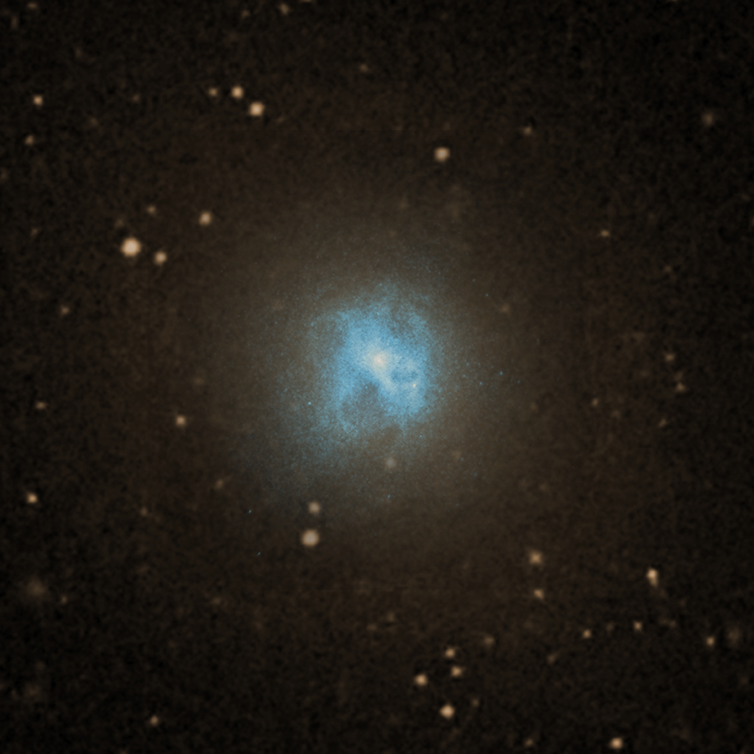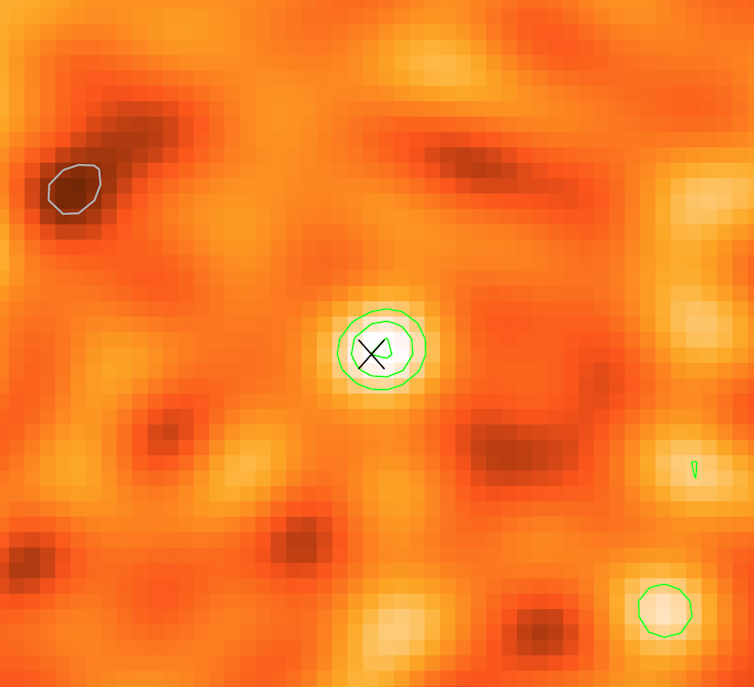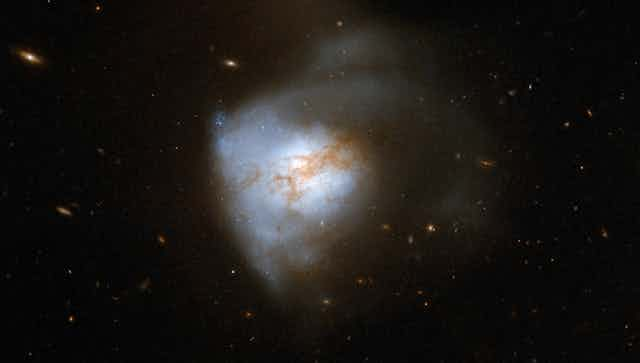A galaxy more than 12 billion light years from Earth is heading for a “red and dead” future because it is running out of the fuel needed to make new stars.
The galaxy, known as ALESS65, is an ultra-luminous infrared galaxy, which are typically about 100 to 1000 times brighter than our own Milky Way in infrared light. They are the brightest galaxies known in the local universe, and emit more than 90% of their light in the infrared.
Most of these galaxies are in merging or interacting systems, where the collision with another galaxy triggers a burst of new stars to form (a starburst) by compressing gas and dust, leading to their enormous brightness.
When the Atacama Large Millimeter Array (ALMA), in Chile, observed ALESS65 in 2011 it found that the galaxy is at more than 12 billion light years away and helped confirm that it’s forming stars at more than 500 times the rate of our Milky Way.
Red and dead galaxies
A “red and dead” galaxy is one that is no longer forming stars – so they are “dead” – and they appear red because the existing stars have aged (old stars are redder than young stars).

Massive “red and dead” galaxies, similar to nearby galaxy NGC5044, have now been discovered to exist at more than 11.5 billion light years away, only 2 billion years or so after the big bang. These distant massive “red and dead” galaxies are puzzling to astronomers.
Galaxies are thought to form in hierarchical mergers, with large galaxies formed through the mergers of smaller ones. Since it takes time for massive galaxies to build up, use up all their stellar fuel, and for their stars to age, there shouldn’t be many so early in the universe.
We think ALESS65, and other starbursting galaxies at 12 billion light years away or further, are the galaxies that undergo rapid evolution to become these distant massive “red and dead” galaxies. Studying their properties is crucial for understanding the growth of massive galaxies.
Cosmic carbon monoxide
Carbon monoxide (CO) is familiar to us on Earth as a colourless, odourless gas. In high enough concentrations it’s toxic to humans and has been known to cause suffocation, but in galaxies it’s quite common.
Stars produce carbon and oxygen through fusion processes, and these two elements are the most abundant in the universe after hydrogen and helium. Carbon monoxide is then formed in the cold dense galactic clouds of gas and dust when conditions are right. Carbon monoxide is the second most abundant molecule in galaxies (after molecular hydrogen).
Molecular hydrogen is more abundant in the interstellar medium (the space in galaxies between stars) than carbon monoxide but it is much harder to detect.
Carbon monoxide is easily excited into a high energy state via collisions with the hydrogen molecules. As it returns to the unexcited state it releases the energy as a photon, which can be detected by ground based radio telescopes.
Because of this it has been widely used as a tracer of the molecular gas in galaxies. The first detection of cosmic carbon monoxide was in 1970 by Robert Wilson, Keith Jefferts and Arno Penzias (the same Penzias and Wilson of cosmic microwave background fame). Carbon monoxide has since been detected in hundreds of galaxies.
Our starbursting galaxy on the path to “red and dead”
In research published today in Monthly Notices of the Royal Astronomical Society , my colleagues and I report on our detection of carbon monoxide in ALESS65, using CSIRO’s Australia Telescope Compact Array in New South Wales.
The carbon monoxide emission from ALESS65 is very faint because the galaxy is so far away – astronomers have only detected carbon monoxide in 20 galaxies at the distance of ALESS65 or greater.
From the carbon monoxide detection we were able to estimate how much molecular gas, the raw fuel for star formation, is in the galaxy.

Our own Milky Way will take several billion years to use up its fuel and become a “red and dead” galaxy, merging with Andromeda along the way.
ALESS65 appears to have only tens of millions years left of fuel, which is very fast in astronomical terms. It’s a “gas guzzler” compared to the Milky Way, because of the huge rate at which it is forming stars, and has all the signs of evolving into the distant massive “red and dead” galaxies that have been puzzling astronomers.
We also combined our observations of ALESS65 with the original data from ALMA to work out how similar ALESS65 is to the galaxies nearer to Earth.
ALMA detected atomic carbon emission, which is due mostly to young stars with lots of ultra violet (UV) light emission that energises the edges of molecular clouds. Astronomers are able to determine the strength of the UV radiation in galaxies by combining atomic carbon and carbon monoxide detections.
We found the UV radiation strength in ALESS65 is similar to some starbursting galaxies in the local universe, but it is not as strong as that in the local extreme ones, the local ultra-luminous infrared galaxies.
The weaker UV radiation strength in ALESS65 compared to local ultra-luminous infrared galaxies implies that the stars in ALESS65 are forming over a larger area. This result is consistent with other data on distant ultra-luminous infrared galaxies that has shown they are bigger than local ones.
We will now turn our attentions to search for carbon monoxide in another distant ultra-luminous galaxy, named ALESS61.
Detecting and studying carbon monoxide in more galaxies will tell us even more about how stars formed in the early days of the universe and help solve the mystery of distant “red and dead” galaxies.

